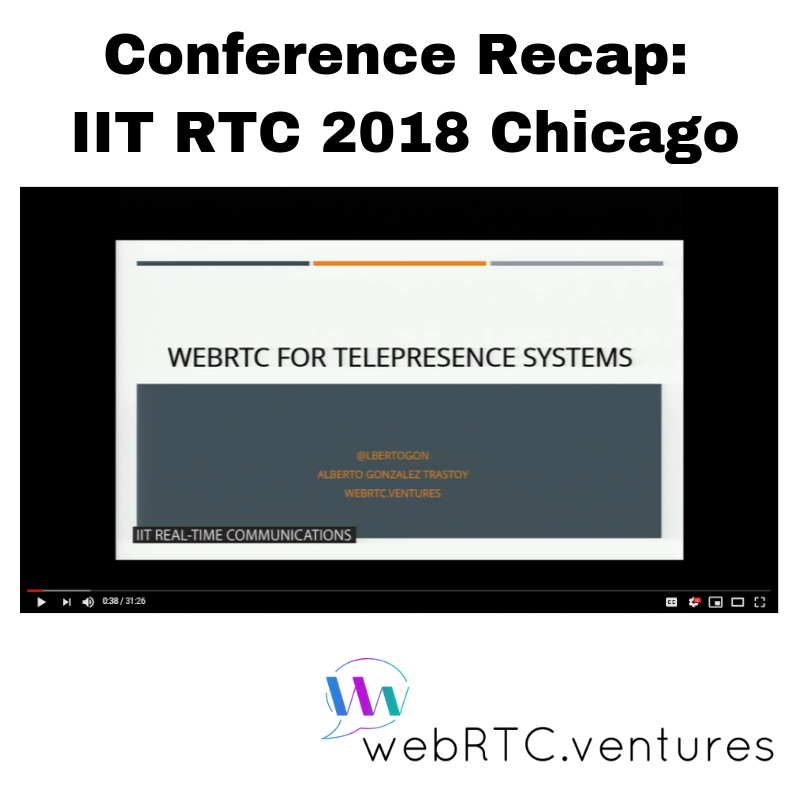A few months ago, I was fortunate enough to be invited to present at the IIT RTC 2018 conference in Chicago. Hey, better late than never on posting, right?? I talked about using webRTC for telepresence systems.
First, for those that do not know, the IIT RTC conference is a yearly Real Time Communications conference that joins RTC experts and enthusiasts from all around the globe. They share their viewpoints on how Real-Time Communications technology will define the future.
Click below to watch the replay of my IIT RTC presentation: Using WebRTC for Telepresence Systems.
Telepresence systems have been evolving and going mainstream with the improvement and appearance of new technologies that make the development more affordable. Also, due to the continuous internet speed growth, the usage of web based applications to deliver multimedia in real time has become easier to implement. Today, being everywhere and connecting with everyone and/or everything is possible at an acceptable cost.
In this context WebRTC has become the perfect candidate to support telepresence systems. As an open source solution, WebRTC has experienced a large growth over the last few years and it is becoming more stable and widely adapted, some examples of applications that have adapted to WebRTC are Facebook Messenger and Snapchat.
Using this WebRTC technology to implement telepresence systems brings us to a world with multiple possibilities but also new challenges.The first one is based on the user interface. Far from being a 1 to 1 videoconference, a telepresence WebRTC based video conference seems to bring some doubts about how the user will interpret specific buttons or other elements that previously were in the other end of the call. What do we do if we want to start a call and end a call from a webpage and the remote side act accordingly?
Another challenge is telecommunications oriented. How can we reach a machine that doesn’t have direct internet connection? What technologies can we use to connect a machine without internet connection to a web application? How can we notify this remote machine in a real time?
Also we have another common challenge, security. What new security issues telepresence brings to the table? What verification mechanism or authentication processes can we use?
Although it has some challenges, telepresence definitely has business value in many fields. It can reduce cost of operations drastically but, when does it make sense to use WebRTC?
The summit forum sessions were particularly interesting. Speakers from IBM, Microsoft, Verizon, Oracle and more presented on topics ranging from “AI and the Future of Customer Engagements”, to “Speech recognition for multi-channel communication networks”, to “All Web-based Next Generation 9-1-1 Services – Is it a viable option?”.
Overall, this conference was a great opportunity.
It was beneficial both for networking with relevant experts in the Real Time Communications field and for learning about current trends and new technologies.
Want to Learn More?
To learn more about how you can use webRTC to grow your business — whether you are interested in real time communication capabilities in telehealth, education, broadcasting or more…or would just like to learn more about webRTC in general, contact us.











